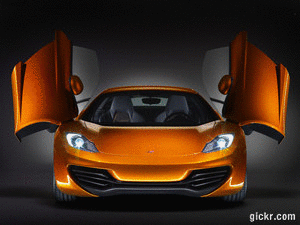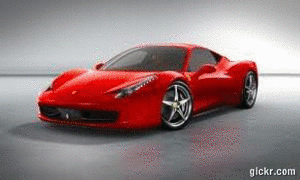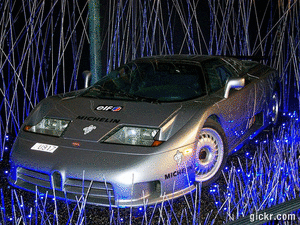Is this the best application of Ford’s blown V-6 yet?
 A twin-turbo pickup truck? Well, that just seems silly.
A twin-turbo pickup truck? Well, that just seems silly. Sure, plenty of pickups have received forced induction - most of them with superchargers, many of them Fords—but the EcoBoost F-150 is a first among production trucks in that it uses a pair of turbos. (GMC’s Syclone, which had a larger V-6, was fed by only one turbocharger. It remains bad-ass.) This also marks the first time Ford’s 3.5-liter EcoBoost engine has appeared in a rear-wheel-drive product, and it’s perhaps the vehicle in which this engine feels most at home.
Putting EcoBoost in Its Place
Tuned to produce 365 hp and 420 lb-ft of torque in the F-150, this iteration of the turbo 3.5-liter V-6 trumps those installed in the Ford Flex and Lincoln MKT and MKS. In this truck, however, it feels much more drivable; trucks aren’t the most responsive vehicles in the first place, mitigating what minimal turbo lag exists. The EcoBoost’s plentiful torque is most useful when doing manly pickup-type tasks, like hauling or towing.
| |
The EcoBoost engine’s primary advantage over the 5.0—and even the Ford 6.2-liter V-8—is fleetness; of course, that requires a heavy foot. This 4x4 SuperCrew completed the 0-to-60-mph sprint in 6.1 seconds, the 5.0 we tested took 6.7, and a 411-hp 6.2-liter needed 6.3. None of those times is slow, and it should be noted that you can’t really go wrong with the 3.7-liter six, which hits 60 in 7.6 seconds. The V-8s, however, sounded best while turning in their times.
Downsizing the Volume
Our one real complaint, then: A truck this quick should make noises. You should hear it coming and going. The only sounds emanating from the EcoBoost F-150 are a faint turbo whistle and the occasional light sneeze on overrun. It’s quiet—too quiet.
| |
The cheapest EcoBoost model is a two-wheel-drive F-150 XL with a heavy-duty package and eight-foot bed ($28,185), but our test vehicle was not cheap. The FX4 SuperCrew starts at $40,365 and comes standard with four-wheel drive and the 5.0-liter V-8. Adding the EcoBoost V-6 is $750. This truck also had the FX Luxury package ($1950) with power adjustable pedals, a power sliding rear window, automatic climate control, a sound-system upgrade, backup sensors, a rearview camera, remote start, and heated power front leather buckets. When the grand total crosses the $40,000 barrier, an additional $750 is negligible. It’s a reasonable price to pay for 40 lb-ft of torque alone.
So a capable powerplant has found its best fit, giving the F-150 one more in a lineup of solid engine choices, but the EcoBoost once again fails to live up to the efficiency hype of its name. Aside from its fleetness, it doesn’t make a strong case for upgrading from the 5.0. Luckily, though, there’s no wrong decision.
Source : Caranddriver.com
| |



















